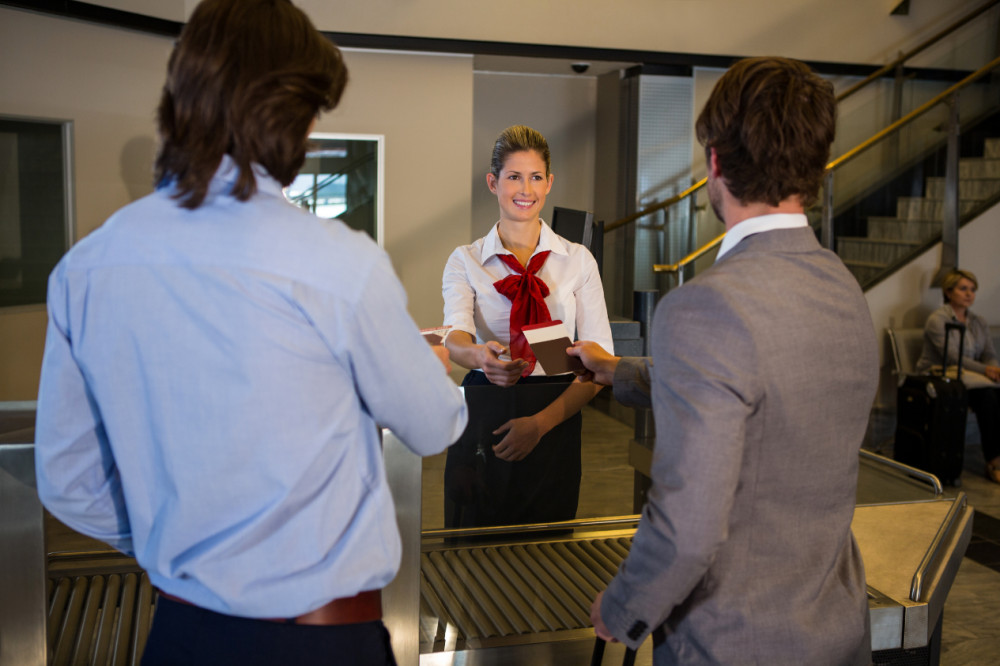
Top Trending Hotel Amenities Guests Can’t Resist in 2025

Guests aren't booking rooms in 2025—they are buying experiences. Pandemic-era expectations have been integrated into long-term behaviours, and travellers desire speed and convenience, while also seeking meaningful, engaging, wellbeing-focused, and sustainability-based interactions. Hoteliers who go past the status quo amenities and design cohesive and emotionally intelligent experiences will garner loyalty, as well as premium revenue. The following amenity categories will drive bookings, reviews, and incremental spend in 2025—and practical ideas hoteliers can implement now.
1. Frictionless, contactless technology—the baseline expectation.
Mobile check-in, digital room keys, and seamless mobile payments are not "nice to have" technology—they are expected technology. Guests want less friction from booking to checkout, conceptualisation and execution: frictionless arrival, immediate access to rooms and zero-hassle billing from their guests. On the operational side, technology that makes this frictionless execution and efficiency technically possible includes cloud PMS, integrated payments, and mobile-first guest apps. If your property is still relying on manual first impressions and check-ins, do not be surprised if your reviews reflect you not being as efficient and potentially lower your review scores.
2. AI-driven personalisation and intelligence in the room
By 2025, personalisation had transitioned from piloting marketing campaigns to the guest experience. Leading hotels take the information they have about the guest (personal preferences, stay history, loyalty tier) to personalise the in-room experience (room settings, restaurant offers, activities). In-room intelligence (smart TVs that allow guest access for streaming, voice or app-controlled devices for lighting/heating, AI concierges, etc.) creates a feeling of a personalised and effortless stay. Guest experience creates ancillary spend and satisfaction if managed respectfully and transparently.
3. Wellness as an all-property promise
In 2025, wellness is now total: guests expect sleep-science bedding, in-room fitness kits (yoga and resistance bands), sleep menus, and mental-wellbeing programs (guided meditation, sound-therapy playlists). Hotels that provide physical wellness (on-site spas, fitness classes) and digital wellness (apps, teletherapy partnerships) compete for leisure and bleisure guests. Wellness is more than just a bonus — it is something to create a profit centre and differentiate.
4. Genuine sustainability - guests will notice and reward it
Greenwashing is no longer going to work. Guests in 2025 will demand transparency of sustainability initiatives that are verifiable: on-site renewable energy, low-flow water systems, refillable hotel amenities, local F&B sourcing, and reporting on carbon intensity per stay. Sustainability also contributes to guest experience - i.e., using a variety of natural materials, biophilic design, or farm-to-table menus - all of which promote satisfaction and brand loyalty. Furthermore, on the operational side, sustainable practices frequently provide cost savings - (energy, waste) when using the right technology.
5. Work-from-hotel and hybrid spaces
The pattern of remote and hybrid work is firmly entrenched. Guests now look for reliable, high-speed internet and hotel work environments — private day offices, soundproof pods, bookable meeting rooms, and F&B packages that emphasise day use. Business travellers are increasingly focused on productive-first amenities: ergonomic furniture in guest rooms, universal power hubs, quiet-zone floors. Day-use rooms or “workation” packages can both fill weekday demand and elevate occupancy during shoulder periods.
6. Local, authentic experiences and curated partnerships
Travellers desire a local connection. Hotels have moved away from the generic concierge list and curated partnerships with local artisans, chefs, and interesting tours: micro-cooking classes with a local home cook, guided market walks, or pop-up dining experiences with local vendors. These experiences create deeper significance for guests and provide potential short-form content for guests — which is “marketing” in a natural way. For luxury and aspirational travellers, VIP shopping and experiences behind the scenes are particularly attractive.
7. Experiential sports and social amenities
In addition to pools and gyms, by 2025, hotels will be adding experiential amenities that create social buzz: padel courts, urban rooftop farms, craft cocktail labs, and immersive event programming. Padel, in particular, has emerged as an amenity that attracts both locals and guests with an element of sport, socialisation, and lifestyle cred. All the properties that develop a calendar of social activations — themed nights, guest chefs, or fitness festivals — will benefit from increased F&B and ancillary spending while remaining top of mind all year long.
8. Food & beverage beyond the minibar
Guests expect to find food offerings that reflect the rest of the experience: healthier in-room dining options, transparent sourcing, partnerships with local bakeries, and pop-up food concepts. Ghost kitchens and third-party micro-restaurants offer hotels the opportunity to expand food offerings and enhance flexibility without requiring significant capital. Be thoughtful about the minibar (local snacks and non-alcoholic craft offerings) and offer grab-and-go food and healthy options, which score points with modern travellers. Experiences such as chef-led tasting menus and fully stocked pantries provide unique revenue-generating and socially exploitable opportunities.
9. Increased focus on safety, air quality, and cleanliness – tech improvements normalised
After the COVID pandemic, guests have learned to demand hygienic practices. Guests will continue to want to see cleanliness reinforced and expect better levels of air quality. Much of what hotels have invested in to support elevated safety and cleanliness includes improved HVAC filtration, third-party contact-free cleaning validation, and visible cleaning protocols. When hotels can communicate to guests, even in indirect ways (through guest reviews), how hotels are addressing these needs, they provide a level of comfort, even as we find ways to normalise safe hygiene practices & exposure.
Instead of over-promising and raising expectations, for these technologies and protocols, take the initiative to show the technology/protocols to your guests in the most visible way (signage or notes in the guest app) to maximise their confidence and trust.
Design amenities with purpose
The best overall amenity strategy for 2025 isn’t just about ticking off every shiny trend; it’s about aligning guest wants, market differentiation, and practical implementation. Choose a clear guest persona and 2–3 amenity pillars (e.g., tech, wellness, local experiences) and execute those with quality and transparency. When a hotel can eliminate friction, add meaningful personalisation, and create an extraordinary local experience with sustainability at its core, it won’t just receive a great review — it will earn a repeat guest.
Follow Foodism Connect to discover trends and how hotels can transform!
Related Blogs

AI in Kitchens & Hotels: What the Forum Revealed About Tech Skills in Hospitalit
51 Views

Contingency Planning for Festival Staff Shortages: Essential Tips
38 Views

Optimizing Multi-Outlet Hiring During Festive Season
39 Views

When to Hire vs Freeze Hiring During Festival Season
54 Views

Efficient Onboarding of Temporary Staff: Best Practices for Hotels
62 Views